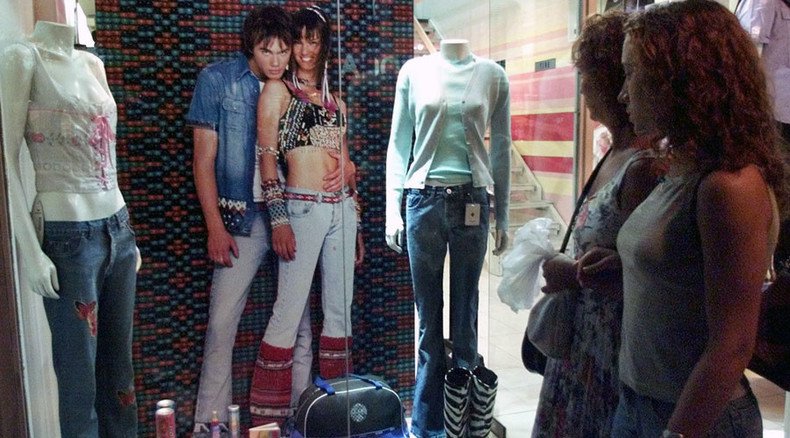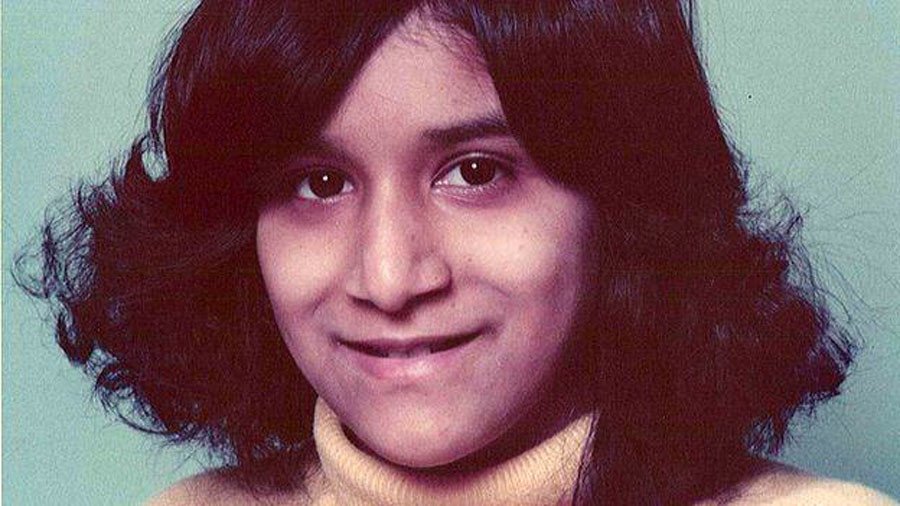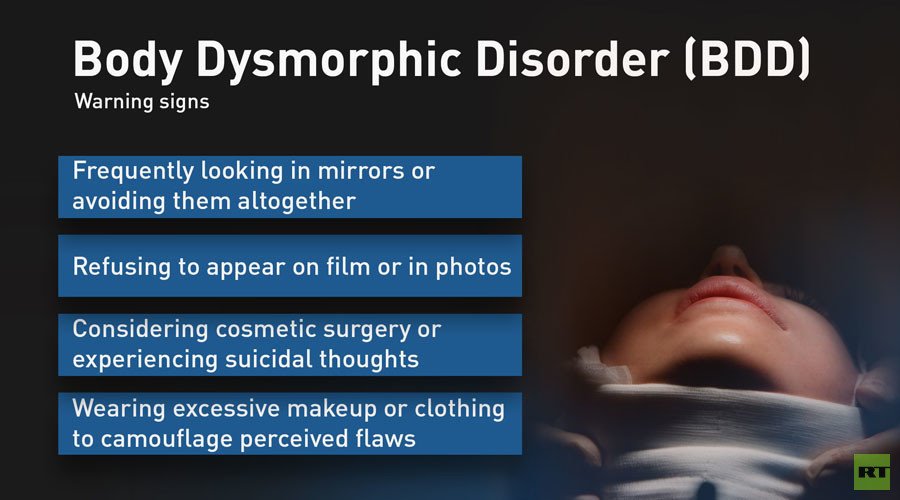Consumer culture ‘feeding’ body image anxiety, BDD sufferer tells RT

Consumerism could be crippling the mentally ill, RT’s William Njobvu finds, as one Body Dysmorphic Disorder (BDD) sufferer reveals she turned suicidal as a result of “poisonous” mass media decreeing the ‘perfect body.’
Worrying about physical appearances can be common. But for some people these concerns can escalate and, if allowed to ferment without help, develop into BDD.
Sufferers experience daily torment about their real or perceived flaws.
They are often mistaken for being vain or self-obsessed, but in reality they are disgusted by the thought of their own appearance.
Unable to control such negative self-assessments, BDD sufferers dismiss anyone trying to convince them otherwise.
One in 100 people in Britain suffer with the anxiety disorder, which can lead to eating disorders and cosmetic surgery addictions. Experts fear this is a gross underestimate, however, as BDD patients, especially men, feel ashamed to seek help.
Chillingly, one in 330 people with BDD become so distressed they turn to suicide.
The mental disorder is treatable through cognitive-behavioral techniques, but the CBT methods used must be “very specific to BDD,” according to the BDD Foundation.
The condition equally strikes males and females in adolescence, a time when they are most self-conscious and sensitive to images portrayed in the media.
The ‘Body Image, Eating Disorders, and the Media’ report published in 2008 found teenagers are more likely to believe ‘ideal’ images depicted in mass media are “accessible and believable.”
‘I’m ugly - that’s my lot in life’
Speaking in-depth with RT, Minnie Wright, 47, who has suffered with BDD for 32 years, said the illness once left her convinced that suicide was the only route to happiness.
Wright was only 11 when the disorder took hold.
Growing up in the 1980s, Wright, a British-Asian, was bombarded with magazine covers and advertisements suggesting she should look a “particular sort of way.”
“People like Kate Moss, Linda Evangelista, there was this real sort of want to aspire to be them,” she explained from her Surrey home.
“If you have BDD it’s something that can feed the illness,” she said.
For years, Wright has hated the shape of her nose, which she believes looks “prominent.”

After being bullied “very badly” in school, she was led to believe “I was ugly and unacceptable, it was like that’s my lot in life.”
“Well you’re a ‘Paki’ [an offensive term for Pakistani] so nobody would ever want to go out with you,” the bullies told her.
“Getting that conditioning over those years, that’s what I believe triggered the BDD.”
The causes of BDD are still unknown, but according to the BDD Foundation, it is associated with bullying, teasing and childhood trauma.
‘Looking different makes you susceptible to bullying’
Youngsters often rely on consumer culture to teach them about the “norms” of society.
A lack of diversity in the media has been an issue for decades, with critics warning children are not being taught that over-weight people, ethnic minorities and disabled people are normal and should be treated with equal respect.
Instead, they are exposed to consumer culture, which praises “perfect looking” celebrities on their appearances, strengthening the supposed ‘attractive stereotype.’
Young people are taught this ‘perfect’ image is what they ought to aspire to, impacting too on their expectations of others.
The All Party Parliamentary Group on Body Image report ‘Reflection on Body Image’ says being visibly different “makes some young people particularly susceptible to bullying.”
Today’s consumer culture has the power to influence a teenager to bully people whose appearance does not align with the ‘ideal’ image, causing the victims to worry and in some cases develop illnesses like BDD.

The study also found that 70 percent of women and 40 percent of men feel under pressure from television and magazines to have a perfect body.
“The media will keep you that bit dissatisfied. You will never win,” Professor Glenn Waller of the Central and North West London NHS Foundation Trust said.
Dr. David Veale, a consultant psychiatrist in CBT at the South London and Maudsley NHS Trust and the Priory Hospital said he has seen an increase in such patients since the rise of camera phones and selfies.
“Two out of three of all the patients who come to see me with BDD since the rise of camera phones have a compulsion to repeatedly take and post selfies on social media sites,” he said.
‘Patients never satisfied by cosmetic surgery’
BDD sufferers often try to address their anxieties by seeking cosmetic surgery. Some 15 percent of those pursuing such procedures are thought to have the condition.
Wright had cosmetic surgery when she turned 18, but quickly realized it “made everything worse.”
Woman jailed 2.5 yrs after growing cannabis to sell to fund cosmetic surgery: http://t.co/yLhvvmRn#plasticsurgery#plasticsurgeon#BDD
— LV Plastic Surgery (@DrJeffreyRoth) July 5, 2012It is common for BDD sufferers to feel dissatisfied after surgical procedures, as research shows less than 10 percent of patients with the condition are happy with the results. In extreme cases, patients have tried to sue their surgeons.
‘NHS needs to be more aware’
BDD patients have a much higher suicide rate than the general population. When Wright’s mother passed away 10 years ago, her illness reached its peak and she “was very close to committing suicide.”
Approaching her family doctor in fear, Wright said: “Look, I’m suicidal and I really need help, this is BDD.”
“A lot of GP’s haven’t heard of BDD, or if they have, they will still try and direct you to have generic counseling,” Wright told RT.
She was eventually put on a priority list and treated within five weeks.
She called on the National Health Service (NHS) to become “more aware of BDD and realize it has an extremely high suicide rate.”
The NHS insists it supports those with the illness. A spokesperson told RT people exhibiting BDD symptoms will “always be referred” to their local mental health trust or Child and Adolescent Mental Health service.
“Those for whom initial treatment proves ineffective may then be referred to the specialist center for OCD/BDD in London.”
However, a BDD Foundation spokesperson told RT that GPs in particular need to be “more educated” on the illness.
“We need to educate the public more about BDD and that will filter down to GPs.”
There should also be “more awareness in schools about mental health, it would be useful so we can tackle these cases from a younger age,” they told RT.
Excellent BDD film launched ahead of world’s first international #Bodydysmorphicdisorder conference http://t.co/Y3yuL1QLIl
— NHS Maudsley (@MaudsleyNHS) April 30, 2015“I wouldn’t blame it all on the media, but they contribute. A realistic perception of men and women is needed in the media.”
Earlier this year, a Protein World advert featuring a bikini-clad model asking “Are you beach body ready?” came under fire, receiving hundreds of complaints. Campaigners said the ad “feeds illnesses like anorexia.”
In recent years BDD awareness has increased in Britain. The BDD Foundation hopes to break the stigma surrounding the condition and urges people with symptoms to come forward and seek help.
“There is actually more out there now for people with BDD, certainly a few years ago there was very little. But now we’ve got a few more support groups. For future generations, I’m hoping there will be a lot more support and awareness about the illness,” said Wright.












